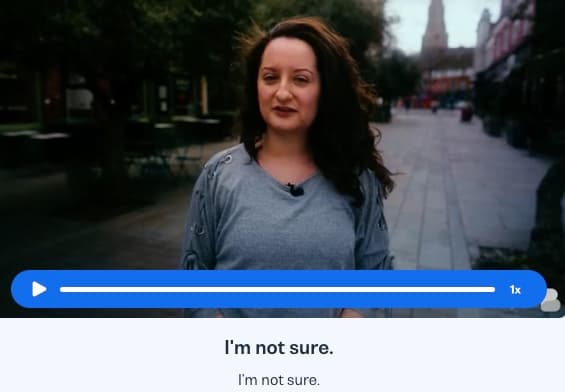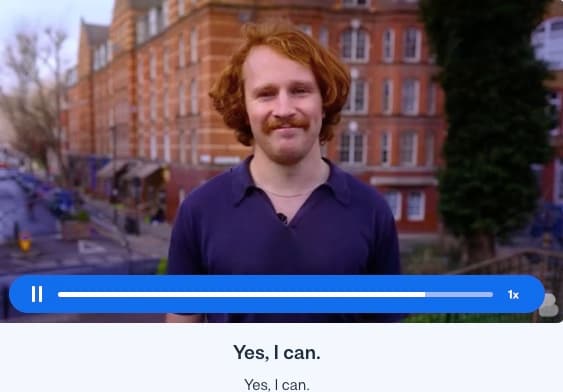I want to learn...
Author:

Barney Meekin
One thing most English learners need to know is how to learn English email writing. In professional and academic settings, emails rule. They’ve been popular since the 1980s and that isn’t likely to change. Sure, instant messaging and social media have taken over casual communication. But email is still the king of workplace, academic and semi-formal communication.
Whether you have ambitions to use English for work or not, improving your English email writing skills is a fantastic idea. Want to get in touch with the hotel you’re staying at next week? Yep, email is best. Need information about a new product from customer service? Email is the way. Or maybe you’d like to catch up with an old classmate you haven’t spoken to in years? Email is one of the best options.
In this guide, you’ll learn how to create clear and confident emails.
Why email writing matters for English learners
Email is one of the most common ways to communicate nowadays. And it’s just as important for English learners as it is for native speakers.
Being able to write good emails in English is important internationally for professional and academic opportunities, like working for a multinational company or studying overseas. It’s also important in semi-formal situations, like contacting a bank or customer service (which you’ll need to do if you ever live in or visit another country).
You might even sometimes use email to get in touch with friends or language exchange partners.
To communicate effectively in all of these situations, you need to write clear and easy-to-understand emails. Let’s learn how to do that.
Basic English email vocabulary and phrases
Before we get into the more complicated aspects of writing an email in English, let’s start with some basic – but important – vocabulary. Here are some words and phrases you should know.
1. Common email greetings and sign-offs
Dear [Name], (in formal situations)
Hello [Name], (in semi-formal or casual situations)
Best regards, (in formal or semi-formal situations)
Sincerely, (in formal situations)
Thank you, (in semi-formal or casual situations)
2. Essential email vocabulary
Attachment = any file you send with an email
Recipient = the person you send the email to
CC (carbon copy) = a copy of your email sent to email addresses that you entered in the CC box
BCC (blind carbon copy) = same as CC, except that email addresses in the BCC box are hidden from other recipients
Subject line = the space at the top of an email that tells what the email is about
Body = the main part of your email
Signature = the end of your email
3. Polite expressions and courtesy phrases
I appreciate your [help or time or input].
Could you please [action]?
I apologize for [situation].
Before you write, understand your audience
Writing an email in English isn’t only about your writing skills. Formality and tone are also important. So before you start writing your email, take a moment to think about who you’re emailing (and whether it’s a formal or casual email). Don’t type a single word until you’ve thought about the following aspects:
The recipient's role and your relationship. Is the person you're emailing a friend, a colleague, a supervisor or someone you've never met before? The tone of your email – and the words and phrases you should use – changes depending on how you answer this question.
For example, if you’re emailing someone you’ve never met before at a bank, you can start the email with ‘Dear’ or ‘Hello.’ But if you’re emailing someone you know well, you can start the email with ‘Hi,’ ‘Hey,’ or ‘Hello.’
The formality of the situation. How serious is the topic of your email and the overall situation? Again, the tone and words you use depend on this answer.
Let’s say you’re emailing your boss. If it’s a light email with few consequences, starting with ‘Hi’ or ‘Hello’ should be fine. But if you’re emailing to quit your job or make a formal complaint, using a formal term like ‘Dear’ and ending with a term like ‘Sincerely’ are more appropriate.
How to structure English emails
When you write an email in English, be clear, get straight to the point, and make it easy for the recipient to respond. Here's how you can organize your English emails so that anyone can understand your message.
1. Write a clear subject line
Your subject line tells the recipient what your email is about (and many people decide whether or not to open an email based on this). Keep your subject line short, but make sure it’s descriptive enough for the recipient to understand what will be in the message.
2. Greet your recipient
Start the email with a greeting. As discussed above, the words you use here depend on the formality of the situation and your relationship with the recipient.
If you’re not sure which greeting to use, ‘Hello’ is a safe bet. It’s not too formal or too casual, and it’s appropriate in most situations. Remember to add the recipient’s name to the greeting too.
3. Write a clear message
Start the body of your email with the main point. Your recipient is probably busy, so respect their time by getting straight to it.
Keep your sentences and paragraphs short and include white space (empty lines between paragraphs). This makes your emails easy to read on a computer or smartphone.
4. Sign off
End your email with an appropriate sign-off phrase (again this depends on your relationship with the reader and the formality of the situation).
If you’re not sure which words to use, ‘Best regards’ or ‘Regards’ are safe bets. They’re not too formal or too casual and are appropriate in most situations.
After the sign-off phrase, add your name and any contact information you think the recipient might need.
Five tips for writing great English emails
All right, you’ve figured out how to write for the correct audience and structure your English emails. Well, here are some more tips to help you write effective emails.
1. Use simple and clear language
I get it, you’ve learned some fancy new English words and you want to use them. But don’t. Emails aren’t the place to show off your grammar knowledge or writing skills. Keep it short and simple. Avoid idioms, metaphors or jargon that might confuse the reader.
2. Proofread and edit your emails
Clarity is the goal with emails. So you need to make sure there are no confusing phrases or mistakes. To do that, use spell-check and grammar tools. As a language learner, you need to take extra care at this step. Your English doesn’t need to be perfect, but it does need to be clear.
A great way to check your English emails for clarity (this might feel weird at first but it works) is to read your email out loud. This will help you find sentences that are too long or confusing. When you’re reading out loud, pay attention to your breath. If you start to feel out of breath, your sentences are too long and complex.
Finally, for important emails, ask a friend to take a quick look to check if it’s easy to understand.
3. Get straight to the point
Okay, technically this isn’t a new point (I said this in the section above too), but it’s so important I’m going to repeat myself. The people who read your emails are busy. They don’t have time to read super-long emails. So keep the focus on your main message.
Don’t include unnecessary details and descriptions. Don’t bring up unrelated topics. Respect your reader’s time by being brief and getting straight to the point.
4. Be friendly and professional
Be careful not to fall into the trap of being too formal in your English emails. Even in formal emails, you should aim to be friendly and polite. It’s important to use positive language and not to sound aggressive or confrontational, even when sending a complaint in an email.
5. Tell the recipient what you’d like them to do
Your email needs to make it easy for the recipient to understand what you need from them. So be really specific with instructions. But also be polite and respectful when making requests.
English email examples
So you can see how all these phrases and tips work together, here are two example emails. One is formal and one is informal.
Formal English email example
Although this is a formal email, notice how the sentences and words are super simple. Just because it’s formal doesn’t mean you need to use complicated English. Also, look at how clear the request is. The reader of this email knows exactly what they should do.
Subject: Request for information about your language courses
Dear Rachel,
I am interested in enrolling in one of your language courses. I visited your website and found several interesting courses, but I would like some more information to help me make a decision.
Could you please provide details on the following:
Course duration and weekly schedule
Class size
Course materials and resources provided
Price
Thank you for your help.
Sincerely,
Jose
Informal English email example
The writer of this informal email gets straight to the point. They only include details they think are necessary, and they do it in a friendly and polite way.
Subject: Hello from your new language exchange partner!
Hi Sally,
I'm Kumiko, and I recently came across your profile on the language exchange app. I noticed that you're learning Japanese. I'm a native Japanese speaker and I'm currently learning English. I thought it would be great to connect and practice together.
A little bit about me: I'm 25 years old, and I work as a chef. In my free time, I enjoy swimming and reading.
Let me know if you're interested in setting up a language exchange session. We could start with a short video call or chat to get to know each other better.
Looking forward to hearing from you!
Thanks,
Kumiko
Master email writing in English
The next time you write an English email, whether it's to a friend, colleague or business contact, remember the aim is to be clear and easy to understand. Follow the tips in this guide and the recipients will appreciate your clear and concise emails. With a little practice, writing an email in English will be a breeze for you!
AUTHOR

Barney Meekin
Newlanguages


